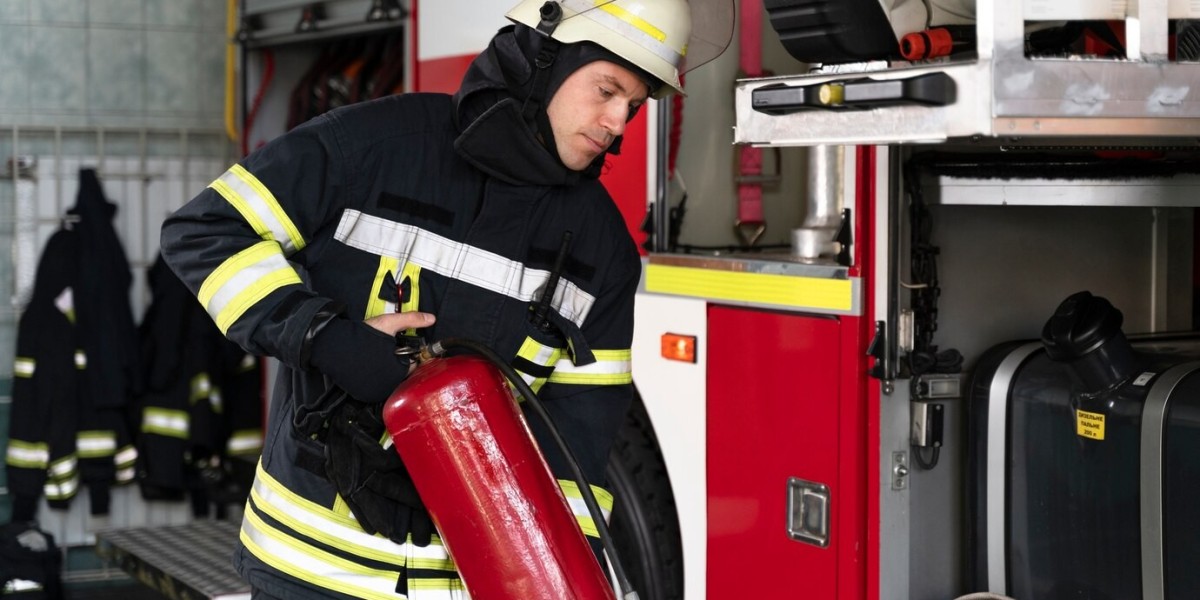Fire risk assessments and safety training are two essential components of any workplace safety strategy. By identifying fire hazards and evaluating potential risks, fire risk assessments help businesses prevent fire-related incidents. Once these risks are identified, it is crucial to implement relevant safety training, such as fire warden training, first aid training, fire safety training, and fire fighting training, to ensure that employees are prepared in case of an emergency. This article delves into fire risk assessments, their significance, and how they relate to the various forms of safety training.
What is a Fire Risk Assessment?
A fire risk assessment is a detailed evaluation of the fire hazards present in a workplace or other environment. It involves identifying potential fire risks, evaluating the likelihood of those risks, and determining the severity of the consequences should a fire occur. Fire risk assessments also include measures to reduce, control, or eliminate identified risks and ensure that safety protocols are in place.
The goal of a fire risk assessment is to create a safer working environment, reduce the likelihood of fires, and minimize the damage and harm caused if a fire were to break out. The process should be thorough, covering all areas of a building or site, and must consider the type of materials present, the building structure, emergency exits, fire-fighting equipment, and employee awareness.
The Importance of Fire Risk Assessments
Fire risk assessments are vital because they help organizations comply with safety regulations, safeguard employees, and protect property. Regular assessments ensure that fire prevention measures are up-to-date and that fire safety protocols are effective. By identifying potential hazards, businesses can implement strategies to mitigate risks and prevent fires before they happen.
Key benefits of fire risk assessments include:
Legal Compliance: In many countries, conducting regular fire risk assessments is a legal requirement under fire safety regulations. Organizations that fail to comply could face penalties or legal action.
Employee Safety: Identifying and addressing fire risks helps keep employees safe, reducing the chances of injury or fatalities in the event of a fire.
Property Protection: By identifying hazards and implementing control measures, fire risk assessments protect valuable assets, equipment, and the physical structure of the building.
The Role of Safety Training in Fire Risk Management
Once fire risks are identified, it is essential to provide employees with the necessary training to ensure they can respond effectively in the event of a fire. Safety training is an integral part of a comprehensive fire risk management plan. It helps ensure that everyone knows how to act during a fire emergency and can help prevent fires from starting or spreading.
There are several key types of safety training that are closely related to fire risk assessments. These include fire warden training, first aid training, fire safety training, and fire fighting training.
Fire Warden Training
Fire wardens, also known as fire marshals, play a critical role in ensuring the safety of employees in the event of a fire. Fire warden training equips employees with the knowledge and skills necessary to perform this important duty. Trained fire wardens are responsible for supervising fire safety protocols, ensuring the safe evacuation of employees, and assisting the emergency services when they arrive on-site.
Key components of fire warden training typically include:
Understanding fire risks and fire safety procedures
Evacuation strategies and the use of fire alarms
Conducting fire drills and practicing emergency evacuations
Identifying hazards and maintaining fire safety equipment
Communicating effectively during an emergency
Fire warden training is crucial because it empowers designated employees to act as leaders in emergency situations, helping to maintain order and safety during a crisis.
First Aid Training
First aid training is another critical element of safety training that directly relates to fire risk assessments. In the event of a fire, injuries may occur, whether from burns, smoke inhalation, or falls during evacuation. First aid-trained employees are equipped to provide immediate care and potentially save lives until professional medical help arrives.
First aid training focuses on:
Basic life-saving techniques such as CPR
Treating burns and other fire-related injuries
Managing shock, bleeding, and fractures
Dealing with smoke inhalation and respiratory issues
First aid training can complement fire risk assessments by ensuring that employees can respond to injuries effectively while waiting for emergency responders.
Fire Safety Training
Fire safety training is designed to teach employees how to prevent fires from occurring and how to respond if a fire breaks out. It covers a wide range of topics, including fire prevention, emergency procedures, and the proper use of fire safety equipment such as fire extinguishers, alarms, and sprinklers.
Key topics covered in fire safety training include:
Understanding fire types and how to extinguish them
Fire safety equipment and how to use it
Evacuation routes and assembly points
How to raise the alarm and communicate during a fire emergency
By providing fire safety training, organizations ensure that employees understand their roles and responsibilities during a fire emergency. This training significantly enhances the overall safety culture of the workplace and ensures that everyone is prepared to act calmly and efficiently during a crisis.
Fire Fighting Training
In high-risk environments, fire fighting training may be necessary to ensure that certain employees are capable of actively combating fires. This training goes beyond fire safety training and provides in-depth knowledge on how to use fire extinguishers, hoses, and other firefighting tools effectively.
Fire fighting training typically includes:
Identifying fire hazards and assessing fire risks
Using different types of fire extinguishers for various fire classes
Operating fire hoses and other firefighting equipment
Rescuing individuals in danger and preventing fire spread
Understanding fire behavior and its different phases
This specialized training ensures that employees in certain roles are equipped with the knowledge to fight fires and protect others while awaiting the arrival of professional firefighters.
How Fire Risk Assessments and Safety Training Work Together
Fire risk assessments and safety training work hand-in-hand to create a safer working environment. While fire risk assessments identify potential hazards, safety training equips employees with the knowledge and skills to mitigate those risks and respond effectively in an emergency.
The process begins with conducting a thorough fire risk assessment to identify and evaluate potential fire hazards. Once these risks are identified, safety training programs—such as fire warden training, first aid training, fire safety training, and fire fighting training—are implemented to ensure employees are prepared to handle these risks appropriately.
For instance, if the fire risk assessment identifies a high-risk area where flammable materials are stored, fire safety training can include specific instructions on handling these materials safely. Fire warden training will help ensure that designated employees know how to evacuate others quickly in the event of a fire, while first aid training ensures that someone on-site can provide immediate medical assistance if needed.
Conclusion
Fire risk assessments and safety training are essential components of a comprehensive fire safety strategy. By identifying fire hazards and providing employees with the training needed to respond to emergencies, organizations can significantly reduce the risk of fires and protect their workforce. Fire warden training, first aid training, fire safety training, and fire fighting training are all integral parts of this approach, ensuring that employees are well-prepared and able to act effectively in the event of a fire. Investing in both fire risk assessments and safety training helps create a safer workplace, reduces potential damage, and saves lives.









